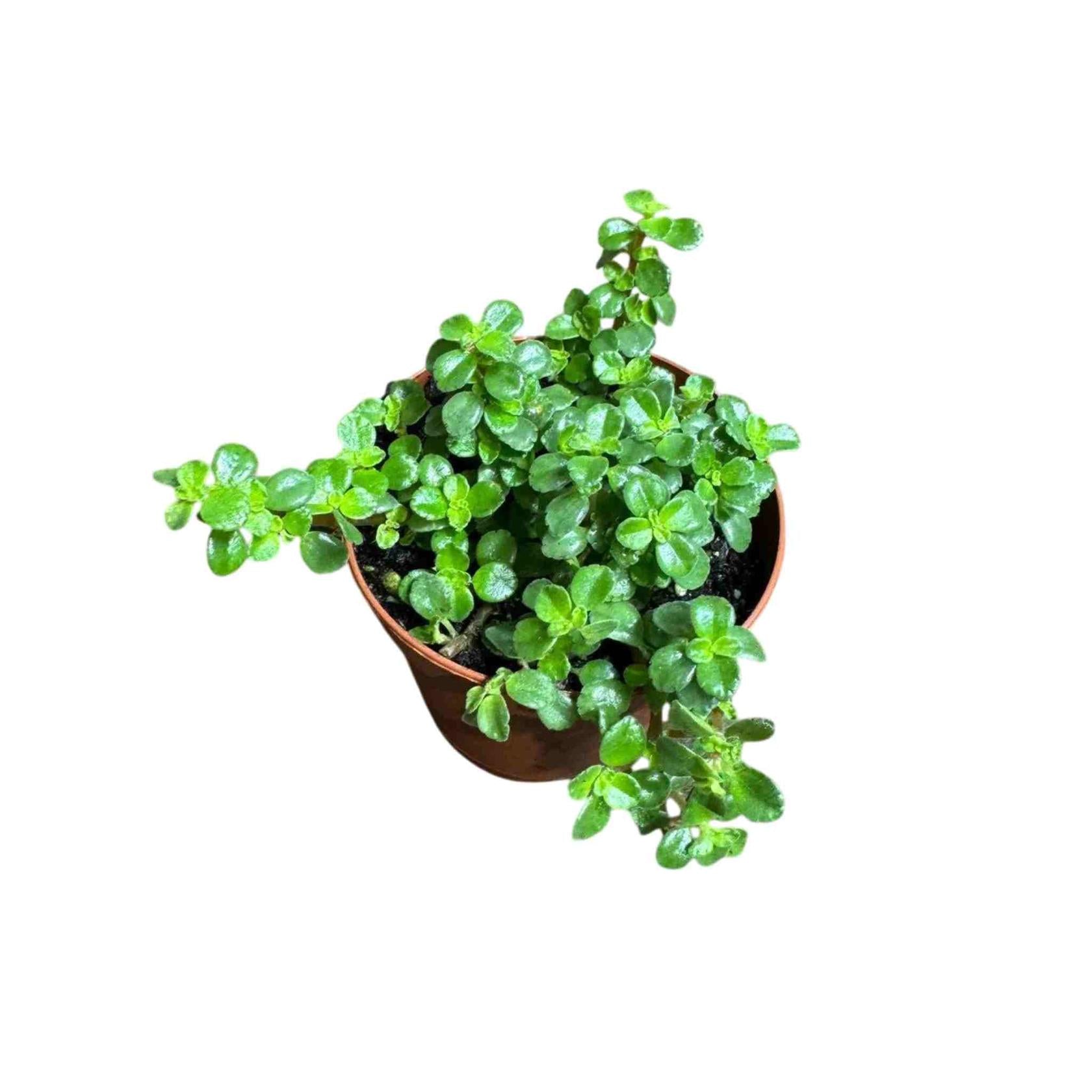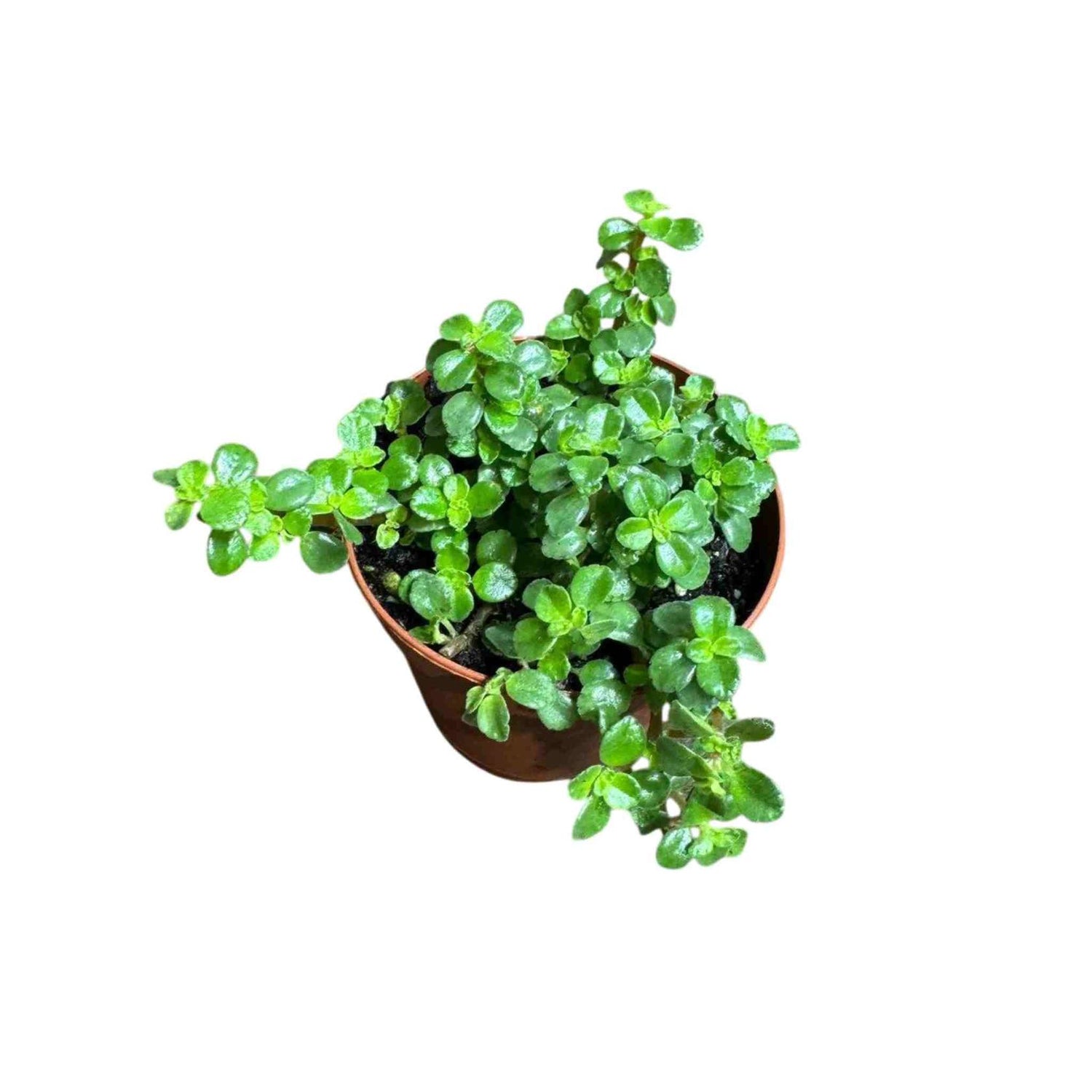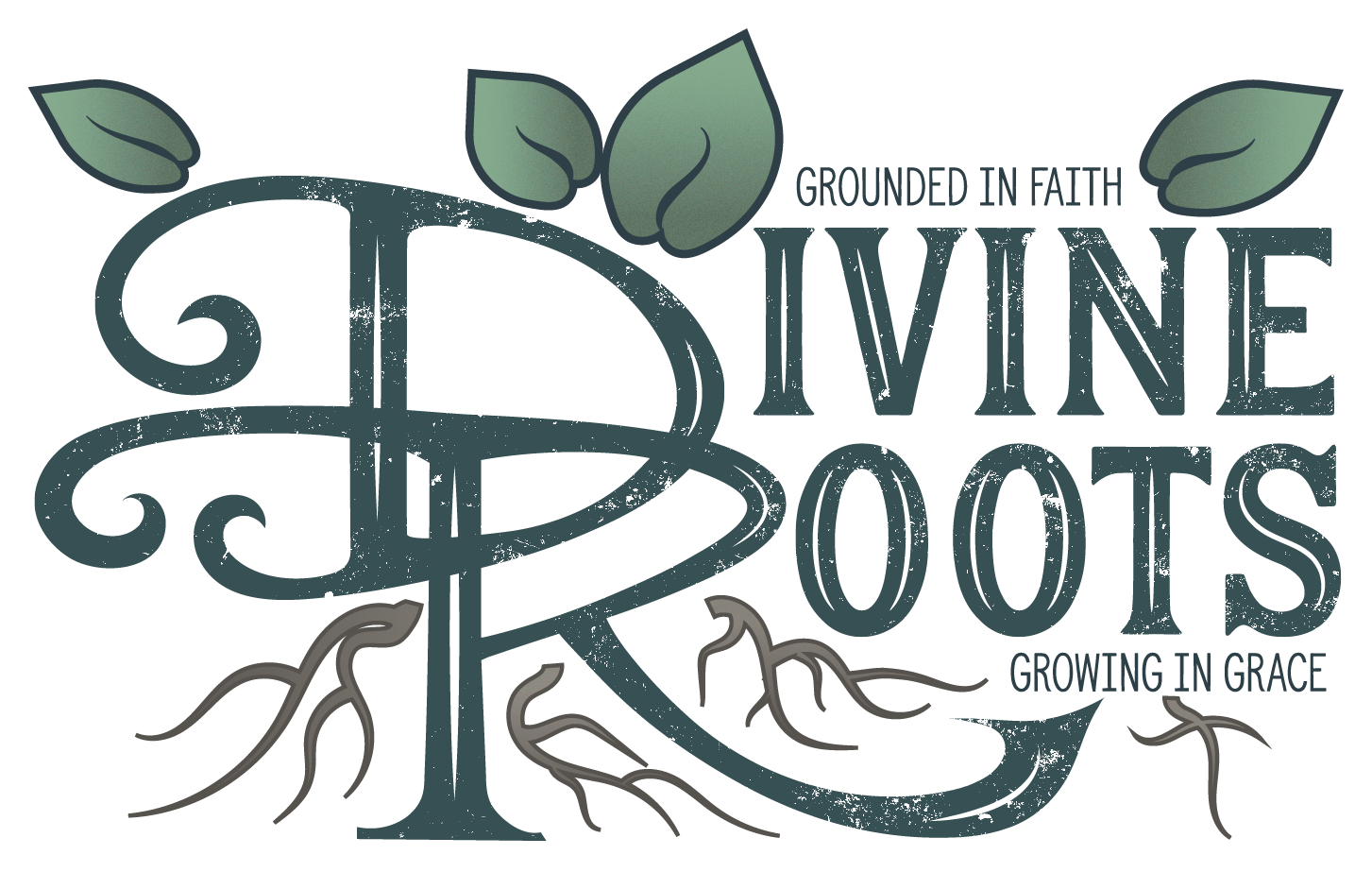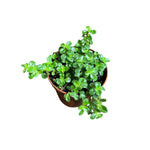
Pilea Baby Tears
$12.79
Unit price perEstimated delivery between 31 October and 02 November.
At Divine Root, we are committed to delivering healthy, high-quality indoor plants to our customers. While we do not accept returns due to the perishable nature of live plants, we offer a 30-day plant health guarantee and store credit for qualifying issues. Please read our Refund Policy carefully to understand how we handle concerns regarding plant health, shipping, and order

Pilea Baby Tears Care Guide & Presentation
Pet Safe
Yes
Water Needs
Medium
Sunlight
Bright
Hardiness Zones
10-11
Temperature
65°F to 75°F
Suitable Space
Terrariums, Hanging baskets, Shaded shelves
Humidity
High
Plant Class
Pilea
Plant Type
Perennial
Plant Characteristics
Creeping Carpet
Genus
Pilea
Fertilizing
Monthly
Re-potting
Annually
Cleaning
Misting
Propagation
Stem cuttings
Pilea Baby Tears: Overview
The Pilea Baby Tears, also known as Silver Sprinkles or Grey Artillery Plant, is a delicate trailing plant prized for its tiny, round, blue-green leaves that resemble droplets of water. Native to Central and South America, this Urticaceae family member forms dense mats of foliage, making it ideal for terrariums, hanging baskets, or as a ground cover in humid environments.
This fast-growing plant thrives in high humidity and bright, indirect light. Its cascading stems can reach 6-12 inches long, creating a lush, carpet-like appearance. Often confused with Soleirolia soleirolii (Baby’s Tears), the Pilea glauca is distinguished by its metallic-toned leaves and less aggressive growth.
Pilea Baby Tears: Benefits
- Decorative foliage: Adds whimsical texture to terrariums or fairy gardens.
- Air-purifying: Filters indoor pollutants like formaldehyde.
- Compact growth: Perfect for small spaces, shelves, or tabletop displays.
- Non-toxic: Safe for homes with pets and children.
- Humidity-loving: Thrives in bathrooms or kitchens with indirect light.
Pilea Baby Tears Care Guide
Light and Water
- Light: Bright, indirect light (east or north-facing windows). Avoid direct sun, which can scorch leaves.
- Water: Keep soil consistently moist but not soggy. Water when the top inch of soil dries (every 3-5 days in summer, less in winter).
Soil and Fertilizing
- Soil: Use a well-draining, peat-based mix with perlite or orchid bark.
- Fertilizer: Feed monthly with a diluted balanced fertilizer (10-10-10) in spring and summer.
Temperature and Humidity
- Temperature: Ideal range: 65-75°F (18-24°C). Avoid temperatures below 55°F (13°C).
- Humidity: Requires 60-80% humidity. Use a humidifier, pebble tray, or terrarium.
Pruning, Propagating, and Repotting
- Pruning: Trim leggy stems to maintain shape. Pinch tips for bushier growth.
- Propagating: Take stem cuttings and root in water or moist soil.
- Repotting: Repot annually in spring to refresh the soil and encourage growth.
Common Problems
- Yellowing leaves: Overwatering or poor drainage. Adjust watering habits.
- Leggy growth: Insufficient light. Move to a brighter location.
- Spider mites: Treat with neem oil or insecticidal soap.
- Brown leaf tips: Low humidity. Increase ambient moisture.
Pilea Baby Tears: Best Locations & Uses
- Terrariums or cloches: Thrives in enclosed, humid environments.
- Hanging baskets: Showcase trailing stems in living rooms or offices.
- Fairy gardens: Add whimsy to miniature landscapes.
- Pet-friendly spaces: Safe for cats and dogs.


